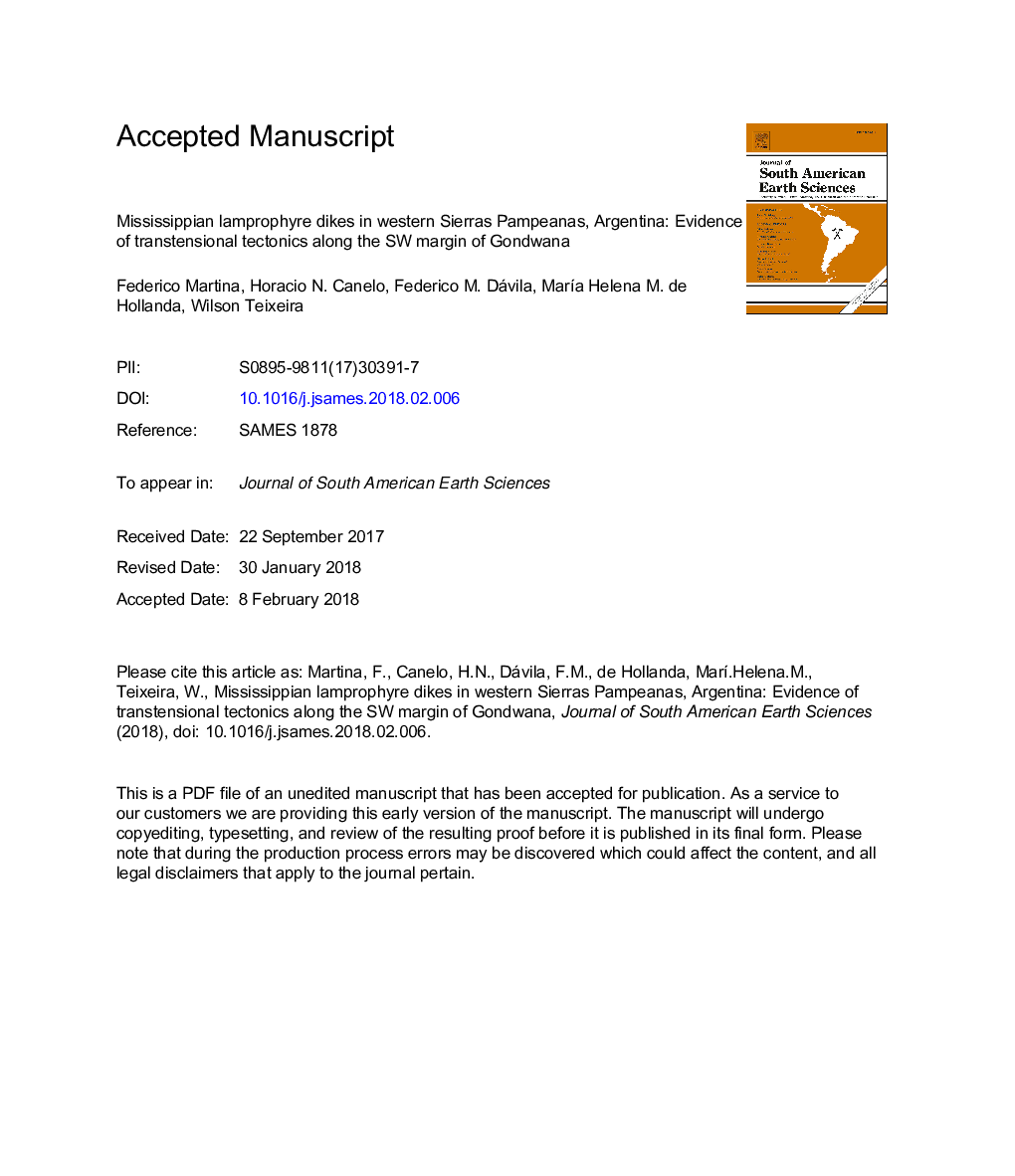| Article ID | Journal | Published Year | Pages | File Type |
|---|---|---|---|---|
| 8907699 | Journal of South American Earth Sciences | 2018 | 36 Pages |
Abstract
In the Famatina range, Sierras Pampeanas of Argentina (SW Gondwana), subvertical calc-alkaline lamprophyric dike swarms crop out through >300â¯km. The dikes cut Ordovician units with a prominent NW-SE trending and are covered by continental sedimentary successions of Pennsylvanian to Permian age. The dikes show a strong structural control associated with Riedel fault systems. Detailed field analysis suggested a â¼N-S opening direction oblique to the attitude of dike walls and a left-lateral transtensional tectonics during the emplacement. 40Ar/39Ar geochronology of a lamprophyric sample defined a crystallization age (plateau; whole rock) of 357.1â¯Â±â¯7.1 Ma (MSWDâ¯=â¯2.3). Coetaneous ductile zones with dominant strike-slip motion, documented along western Argentina for >600â¯km, suggest a regional event in SW Gondwana during the Mississippian. We propose that this deformation was the result of the counterclockwise fast rotation of Gondwana between 365 and 345 Ma, when the Famatina range and western Argentina occupied a sub-polar position. A transform margin along SW Gondwana better explains our (and others) data rather than a subduction margin. This scenario is also consistent with the occurrence of A-type granites and normal-fault basins within the foreland as well as bimodal volcanics.
Related Topics
Physical Sciences and Engineering
Earth and Planetary Sciences
Earth and Planetary Sciences (General)
Authors
Federico Martina, Horacio N. Canelo, Federico M. Dávila, MarÃa Helena M. de Hollanda, Wilson Teixeira,
